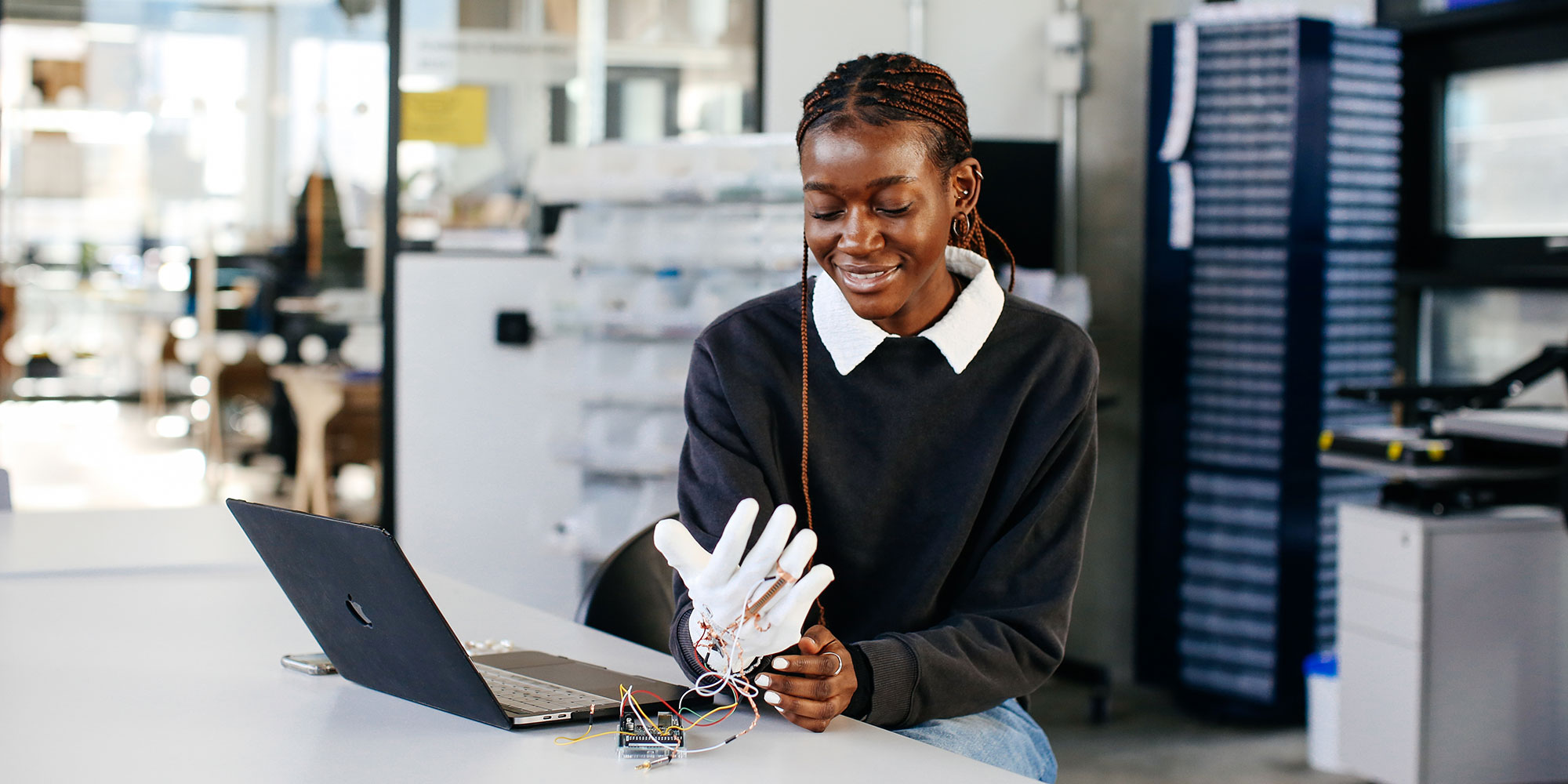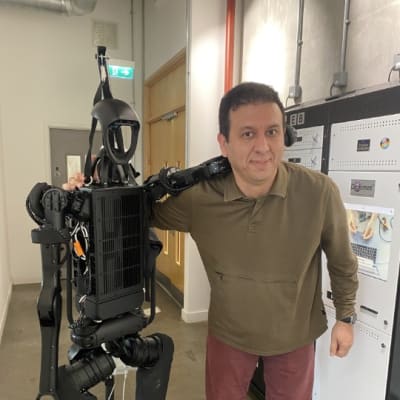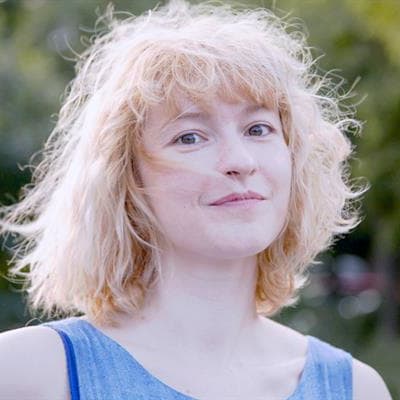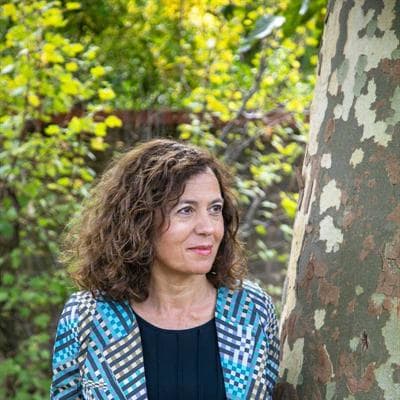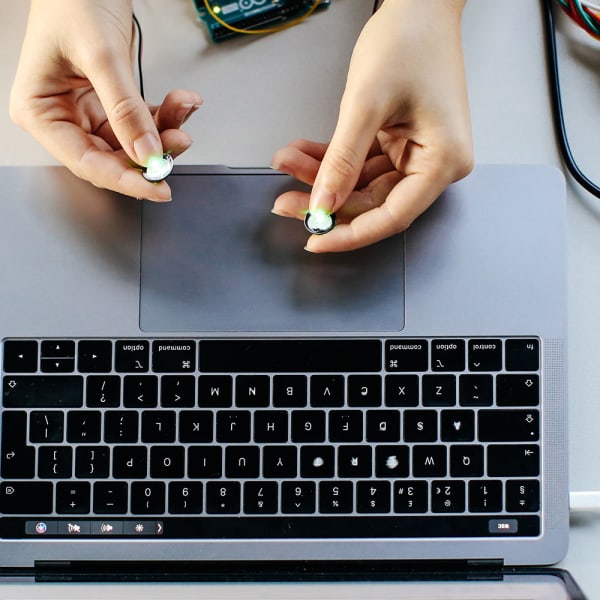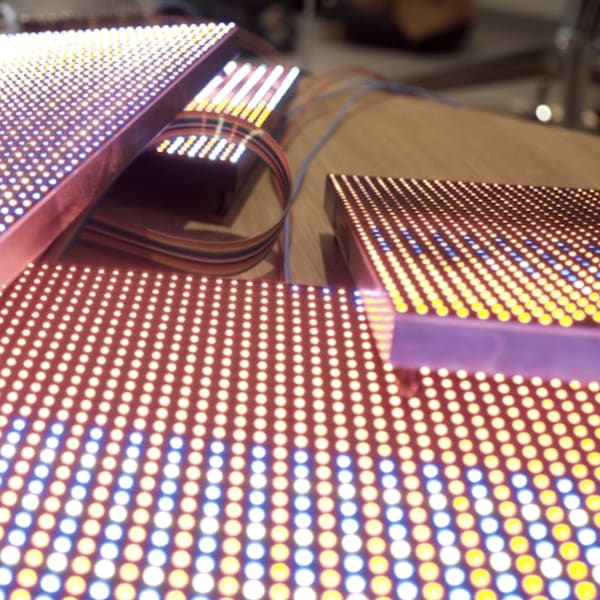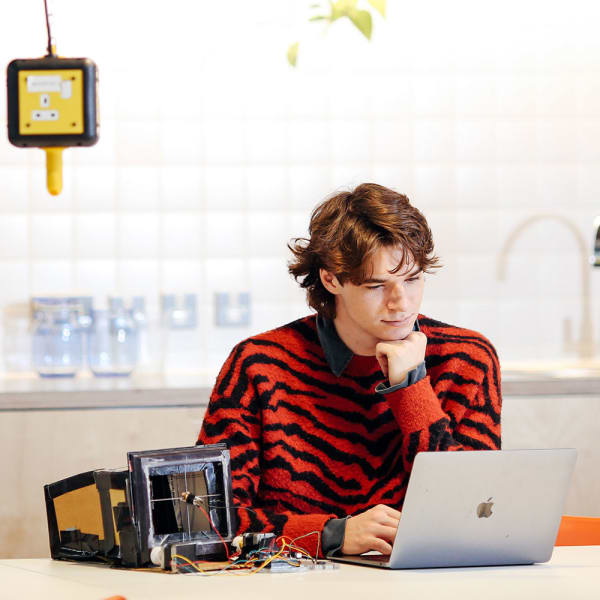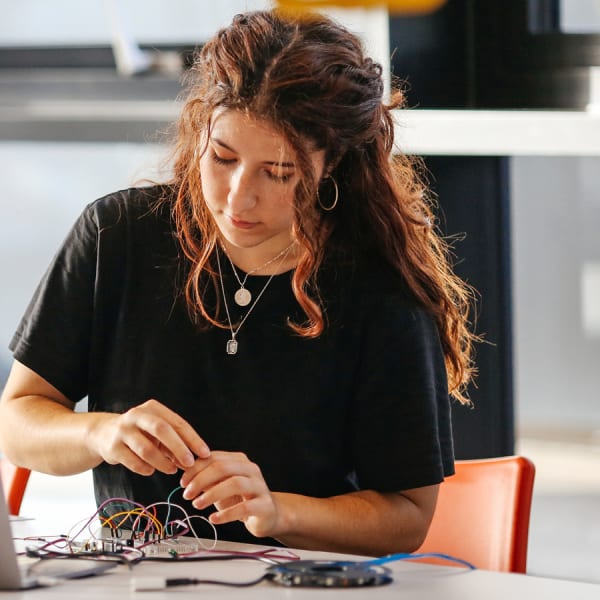Course units
All Course Units are structured along three learning groups: coding, critical theory and creative making, with the creative-making units leading up to the final creative making project.
Year 1
Throughout the first year, you will begin to broaden your computational skill set with an emphasis in coding in languages used in the robotics industry, such as Python and C++. Building on this, you will learn fundamental mathematical and numerical concepts required in creative robotics. Your developing skills will be applied to creative making and computational practices of mechanics. You will also be introduced to physical computing, such as Arduino coding. You will learn introductory creative mechanics, such as digital fabrication, 3D printing of robotic parts and develop an understanding of basic mechanisms of robotic movement. You will have access to open robots used in industry such as robotic arms and humanoids. You will explore the history of robotics and computational creativity and develop academic skills such as how to write essays.
Block 1
Coding One: Introduction to Creative Computing and Coding Practice (20 Credits)
Taught through coding classes, this unit introduces ideas that are necessary to building a theoretical understanding of computation for creative practice. Computational thinking enables you to think about problem-solving in new ways.
Critical Robotics: A History of Robotics and Computational Creativity (20 Credits)
Taught through seminars and workshops and resulting in a piece of academic writing, this unit aims to give you a solid understanding of what robots are in a cultural sense: where, when and who developed them, and how they have led to specific forms of creative practice.
Creative Making: Design and Coding (20 credits)
Taught through creative practice, this unit explores techniques and design methods needed to create and control robotic prototypes using popular robotics libraries. You will tour the basics of robotic coding languages including functions, data structures and conditional statements to make project-based prototypes.
Block 2
Coding Two: Data, Maths and Methods for Mechanical Engineering (20 Credits)
Taught through coding classes, this unit introduces important mathematical and numerical concepts required for the development of computing for robotics. You will develop your knowledge of calculus, geometry, and algebra through applied, practical programming tasks.
Computational Practices: Creative Mechanics (20 Credits)
Taught through practical classes and workshops, this unit introduces you to essential concepts and core techniques in mechanics that underpin contemporary robotic practices. This unit is essential to building an understanding of what robots of all scales can do.
Creative Making: Physical Computing (20 Credits)
Taught through creative practice, this unit explores how to build physical computing prototypes. This will enable you to take robotic ideas from paper to prototype.
Year 2
As you develop your computational understanding, you will progress into machine learning and AI (Artificial Intelligence), with an introduction to basic concepts through a lens of computational creativity. You will explore the impact of robotics in society and learn about human-robot interaction and design. You will progress into creative making of art and robotics, exploring how to create robots that make music and draw. Building on this, you will learn coding of social robots, such as chatbots, and how to design and conduct studies with humans and robots.
Block 1
Coding Three: AI and Machine Learning (20 Credits)
Taught through coding classes, this unit introduces you to functional approaches to machine learning and AI. These approaches are fundamental to the computer vision systems which allow robots to recognise objects and interact with them.
Critical Robotics: Robots and Society (20 Credits)
Taught through seminars and workshops and resulting in a piece of academic writing, this unit explores how robots have evolved differently in societies across the world and the implications of these contexts for robotic futures.
Creative Making: Art and Robotics (20 Credits)
Taught through creative practice, this unit allows you to translate ideas into robotic artworks using your new skills and understandings. As well as building your individual portfolio of robotics practice this unit will test how well your intentions translate into creative outcomes.
Block 2
Coding Four: Social Robotics (20 Credits)
Taught through coding classes, this unit introduces you to functional approaches to building robots that interact with each other and people.
Computational Practices: Advanced Creative Mechanics (20 Credits)
Taught through practical classes and workshops, this unit extends techniques in robot mechanics that underpin contemporary robotic practices specifically around human-robot interaction.
Creative Making: Creative Human Robot Interaction (20 Credits)
Taught through creative practice, this unit allows you to apply the skills learnt in this block to an interactive robotic prototype alongside the theory of human-robot interaction.
Optional Year in Industry
The Diploma in Professional Studies is an optional placement year in industry between the second and third year of the course. It is a managed year of professional experience, undertaken in the creative industries in a variety of national and international locations. Successful candidates are selected on a competitive basis based on academic performance and studentship, successful completion of the Diploma of Higher Education (year 2) and by portfolio and proposal.
Year 3/4
In your final year, you will explore networked robotics and the ethical implications of robotic technologies. Alongside this, you will develop creative project work using open-source frameworks, such as ROS, openRAVE and MoveIt. You will also develop a self-directed graduation project that brings together the skills and expertise you have gained throughout the course.
Block 1
Coding Five: Networked Robotics (20 Credits)
Taught through coding classes, this unit introduces you to functional approaches to building robots that work together and act in concert and in swarms.
Critical Robotics: Robotic Ethics (20 Credits)
Taught through seminars and workshops and resulting in a piece of academic writing, this unit explores the ethical context of robots and our increasing use of autonomous robotic systems.
Creative Making: Applied Robotics - Sensing in the Wild (20 Credits)
Taught through creative practice, this unit allows you to apply the skills learnt in this block to a robotic prototype that engages with its environment through sensor data exploring contemporary applied robotics contexts.
Block 2
Coding Six: Developing Robots in the Creative Industry (20 Credits)
Taught through coding classes, this unit introduces a range of advanced frameworks for robotic development in use across the creative industry. This unit also contains industry talks from robotic practitioners detailing their robotic workflows.
Creative Making: Graduation Project (40 Credits)
This unit gives you the opportunity to develop a significant project with the skills you have gained over the course to date. you will scope a project that focuses on robotic innovation and creative practice. You will also write a thesis exploring the themes about your work.
